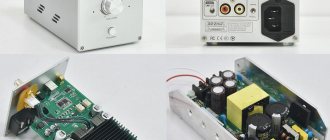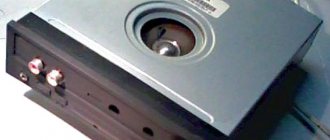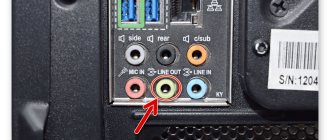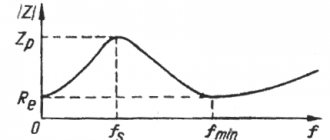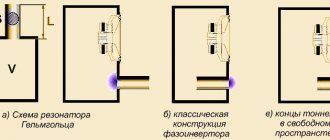840a v2 azur, Technical characteristics, Troubleshooting
Page 15
- Image
- Text
113
840A V2
azur
Specifications
No power supply
Make sure the power cord is securely connected to the electrical outlet.
Check that the power cord is fully inserted into the electrical outlet and that there is power to the electrical outlet.
Check the fuse in the electrical cord or adapter.
No sound
Check that the unit is not in Standby mode.
Check that the audio source is properly connected to the amplifier.
Check that the 'TAPE MON' function is turned off (except when using a tape deck input signal).
Check that the speakers are connected correctly.
If Speaker B terminals are used, check that they are turned on.
Check that the unit is not in mute mode.
No sound in one of the channels
Check the stereo balance control setting.
Check the speaker connection.
Check connections.
Loud humming or background noise
Check the ground wire and connecting wire of the turntable or tonearm.
Check connections.
Check that the cassette deck/turntable is not too close to the amplifier.
Recording and playback cannot be performed on
cassette deck
Check that the connections to the TAPE MON and TAPE OUT jacks are correct.
Weak bass or no stereo
effect
Check that the left and right speakers are not reversed.
The message flashes on the display
See the section for a description of the CAP5 protection system.
The remote control does not work
Check that the batteries are not discharged.
Check that the IR control receiver window on the amplifier is not blocked.
For frequently asked questions, technical assistance and technical information on how to get the most out of the 840A V2 amplifier, visit the Support section of the Cambridge Audio website: www.cambridgeaudio.com/support.php
For warranty or out-of-warranty service, please contact your dealer.
Finding and eliminating
malfunctions
R
U
SSKY
output power
120 W RMS into 8 ohm load 200 W RMS into 4 ohm load
Total harmonic distortion (not weighted)
< 0.001% at 1 kHz at 80% rated power < 0.01% at 20 Hz to 20 kHz at 80% rated power
power
Frequency response
10 Hz - 50 kHz, +/- 1 dB
Signal-to-noise ratio (1 W/8 ohms)
>93 dB
Input resistances
Input 1 (balanced): 20 kΩ Inputs 2-7: 20 kΩ Tape Input: 20 kΩ
Power amplifier attenuation coefficient
> 110 at 1 kHz
Maximum power consumption
800 W
Minimum power consumption
Operating mode (no signal): 70 W Standby mode: 7 W
Bass and treble adjustments
Inertial type
Maximum Bass Boost/Cut: +/- 10 dB at 10 Hz
Maximum High Frequency Boost/Cut: +/-7.5 dB at 20 Hz
Dimensions (H x W x D)
115 x 430 x 385 mm (4.5 x 16.9 x 15.2 inches)
Weight
10.7 kg (23.5 lb)
Cambridge Audio Azur 840A review. Magazine "DVD Expert"
The excellent musicality of the amplifier will certainly appeal to music lovers who plan to use it to sound three rooms at once.
Save and read later -
Cambridge Audio Azur 840A integrated stereo amplifier
Music Everywhere Is it worth purchasing several high-quality amplifiers in order to listen to music in different rooms? The Cambridge Audio Azur 840A gives a laconic answer to this.
PROS: Wide switching capabilities, multiroom, comfortable sound, massive transformer
CONS: Considering the tasks performed - no
Expanding the boundaries The flagship model Cambridge Audio Azur 840A is no longer an ordinary stereo amplifier, but a controller for a multi-room system, which is a rather bold step for Cambridge Audio to explore new spaces. On the rear panel of the case there are a pair of Ethernet connectors compatible with proprietary Incognito A-BUS panels and other equipment that supports this control protocol. The Incognito Ready Type II principle developed by the company, on which remote operation with the amplifier is based, implies independent adjustment of the volume of each zone, tone and balance settings, and also allows you to select any signal source for each of the zones. In addition, you can connect the Incognito AS10 ceiling speakers to these interfaces. And, of course, the Cambridge Audio Azur 840A is equipped with an RS-232 port for connecting to the control server, plus connectors for connecting external infrared sensors. From the above it is clear that the amplifier will take root in a multi-room system without problems. Now let's move directly to its main purpose. As befits a self-respecting audiophile company, the Cambridge Audio Asur 840A has equipped the amplifier with a high-quality balanced XLR input. Along with it there are eight more linear inputs, to which you can connect various equipment. To ensure uninterrupted and safe operation, the Cambridge Audio Azur 840A implements a proprietary patented protection circuit CAP5, which includes no less than five different blocks: protection against overvoltage of DC internal circuits, overheating sensors, overvoltage protection of the outgoing signal, short circuit detection circuit short circuits, as well as a special cascade, limiting the maximum volume. The amplifier corresponds to class XD. This unusual abbreviation indicates another interesting development of the company. Its essence lies in the fact that at low volume the device operates in pure class A, and as the value of this parameter increases, it gradually moves into class B. However, this technology is not similar to class AB. Azur 840A model generates controlled current at the output stages in a special way, not allowing the bias point to linger for a long time at the critical sound zero level, which is necessary at high volumes. Thus, it is possible to get rid of the distortions characteristic of class AB amplifiers. The component is powered by completely separate toroidal transformers for the power amplifier and preamplifier, making the Azur 840A a combination of both in one package.
Laconic universal You can control the amplifier both from the front panel and from the proprietary Azur Navigator remote control. It fits comfortably in the hand, and although the buttons are located quite loosely on it, they are grouped so well that their location is easy to remember after just a couple of minutes of use. Changing modes are indicated by a very beautiful monochrome LCD display with milky backlight. The designers acted wittily with tone controls. In the normal position, they are recessed into the amplifier panel, resembling ordinary buttons. To adjust, they must be pressed out. The sound of the Cambridge Audio Azur 840A is distinguished by the purest timbres. With its help, you can listen to almost any music at a significant volume without the risk of overfatigue. Interestingly, the amplifier has a system for gradually increasing the volume when the device is turned on to a previously set level, as well as gradually decreasing it when turning it off. This process is also accompanied by the spectacular mechanical chirping of the “potentiometer”. If we compare the performance style characteristic of the Azur 840A with traditional Cambridge Audio stereo amplifiers, it is the same, but with a slightly blurred depiction of space in depth, which may be a consequence of the use of a processor that creates certain interference. There are no other complaints about the operation of the device - excellent musicality and a solid power reserve will certainly appeal to music lovers who plan to use it to sound three rooms at once.
Multitasking The Cambridge Audio Azur 840A is not just a stereo amplifier, but a rather serious device for a multi-room system, so if it is used to sound only one living room, a significant part of its capabilities will not be used. But if you plan in the future to provide a decent level of automation in your home and have high-quality sound in all rooms, the potential of the model will come in very handy.
Cambridge Audio Azur 840A 36,200 rubles Technical characteristics
| Power | 120 W |
| Frequency range | 10-50,000 Hz |
| Signal to noise ratio | 83 dB |
| Audio inputs | seven stereo RCAs, cassette deck I/O circuit, balanced XLR |
| Additional connectors | two Ethernet with U-BUS support, RS-232, four inputs for external IR devices, headphone output |
| Dimensions | 430x115x385 mm |
| Weight | 15 kg |
Prepared based on materials from the magazine “DVD EXPERT”, February 2007 www.dvdexpert.ru
This review was read 10,715 times
Cambridge Audio Azur 840A V2 review. Magazine "Consumer"
Azur 840A V2 gives a neutral sound with a slight bias towards the cool side. The strength of the amplifier is its clear and detailed sound processing in all ranges.
Save and read later -
Cambridge Audio Azur 840A V2 stands out for its rich range of settings and large power reserves. In terms of sound, its advantages are broadband sound clarity and good dynamics, which should appeal to all fans of modern music. The amplifier has no special contraindications for reproducing jazz and classical music, but it is not the most emotional device, in addition, there are competitors who can build stereo panorama in a more voluminous manner.
PECULIARITIES
In the 2nd version of the integrated amplifier Azur 840 V2, the developers did not touch the design of the device, but made a number of improvements to its design, in particular, they improved the proprietary XD technology. At the base of the amplifier body there is a 2 mm steel chassis, the facade is made of a solid aluminum panel 7 mm thick, the walls are made of extruded aluminum, and the sides of the device are given an original wavy profile. The large informative LCD display, surrounded by buttons for signal sources, attracts attention. The current input is selected using a high-quality relay with gold-plated connectors. The multifunctional regulator, which controls volume, channel balance and some other functions, is equally uncompromising; its circuit uses a relay and a chain of precision resistors. The built-in microprocessor provides full control of all functions, including various audio modes, renaming of inputs, as well as settings of the proprietary Incognito multi-zone system, thanks to which the Azur 840A V2 is able to send a signal to two remote rooms. The microprocessor can smoothly reduce the volume when the amplifier goes into sleep mode and return the level the next time it is turned on (the function can be disabled). It is possible to adjust the volume level from each input. In addition, any of the inputs can be set to a fixed volume level; this can be useful if the amplifier is used for sounding, for example, the front channels of a home theater along with an AV receiver serving other channels. The amplifier also has more prosaic, but sometimes very necessary functions of channel balance and tonal compensation. However, the developers have provided for disabling these schemes; for this purpose, there is a Direct button on the front panel. On the back of the Azur 840A V2 we see an abundance of connectors: 8 RCA inputs plus a balanced XLR input, outputs for recording and from a preamplifier. The type (balanced/unbalanced) of the 1st input is selected using a small toggle switch. The set of command connectors is extremely extensive: an external IR sensor input, an RS-232 port and a “loop” of RCA input and output. To all this are added numerous ports of the Incognito multi-zone system. The rich program of switching capabilities is completed by two speaker outputs. The amplifier circuit uses separate power supplies for the preliminary and final sections with their own transformers. The power stage is assembled in a “dual mono” architecture with separate rectifiers and transformer windings for each of the channels, at the output of which there are two pairs of high-current transistors, supplemented by another transistor that implements the mentioned Cambridge Audio XD technology.
The goal of XD technology is to surpass the sound quality of traditional AB-class amplifiers by achieving reduced signal distortion not only at low power levels. In other words, XD technology fights transient distortion in a push-pull amplifier, as it does roughly from the name, which stands for Crossover Displacement, that is, “transition point shift.” We will not dwell on the details of the technology here; interesting details of its implementation can be found in the technical description on the Cambridge Audio website. Let's just say that Douglas Self, who invented XD, managed to reduce distortion over a wide range of frequencies and voltages using a variable shift of the “zero” point, the position of which is calculated by a special servo system. At low power, the XD amplifier operates in class A, and at “transition” power and higher it plays cleaner than class AB and B amplifiers, up to frequencies of several tens of kilohertz that are already inaudible to the human ear. And the price for success was only a slight decrease in efficiency, so the XD amplifier will heat up more than an AB class device of comparable power.
The final touch of the Azur 840A V2 design is the improved CAP5 system, which protects the amplifier from almost everything in the world: from direct current, overheating, short circuit, short-term overload of output transistors in current and voltage. The CAP5 also includes a separate anti-clipping circuit; when it is detected, the microprocessor reduces the volume to a level with “standard” signal distortion.
SOUND
Azur 840A V2 gives a neutral sound with a slight bias towards the cool side. The strength of the amplifier is its clear and detailed sound processing in all ranges, with both the lower octaves and the “extreme” highs being well represented. Another plus of the amplifier is the ability to sound legibly and tonally balanced both quietly and loudly. At the same time, the Englishman’s sound cannot be called very detailed; he does not delve into the deep details of timbres. Perhaps the lack of small details prevents the amplifier from creating transparent backgrounds of the musical scene, and therefore the “thickness” of the stereo image is not fully revealed. But there are no problems with the width of the stage; the picture turns out to be contrasting even on recordings with a large number of performers. The amplifier reproduces the timbres of instruments and voices quite naturally, only the trebles in its performance are a little “rough”, if you approach the issue of naturalness very strictly.
Perhaps the most controversial point in the operation of the Azur 840A V2 can be considered the loud clicks of the relay when adjusting the volume. The strong response of the volume control when changing the level from the remote control turns the clicks into a particularly unpleasant crackling sound.
Prepared based on materials from the magazine “Consumer” No. 4 2009
www.potrebitel.ru This review was read 16,549 times

